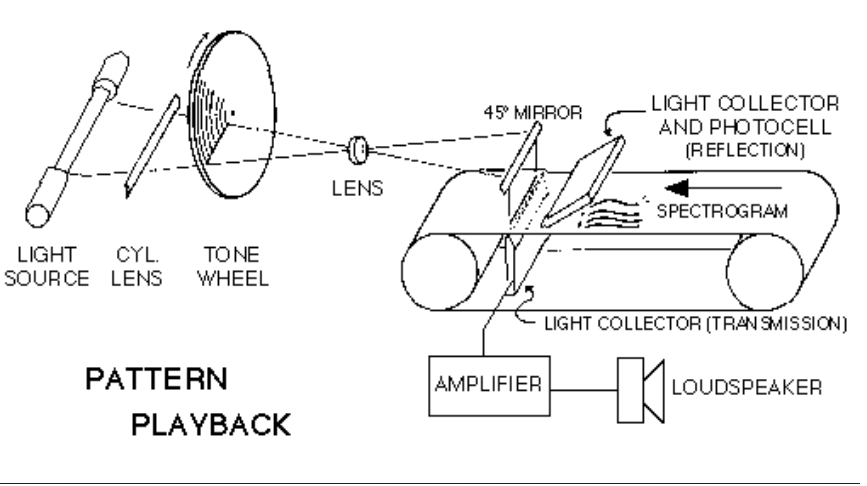Haskins pattern playback machine

"The Pattern Playback was not a musical instrument as such but an early hardware device designed to synthesise and analyse speech, designed and built by Dr. Franklin S. Cooper and his colleagues, including John M. Borst and Caryl Haskins, at Haskins Laboratories in the late 1940s and completed in 1950.
The device converted a picture or ‘spectrogram’ of a sound back in to sound. The ‘Pattern Playback’ machine functioned in a very similar way to the Russian ANS Synthesiser using a photo-electrical system; a mercury arc-light was projected through a rotating glass disc printed with fifty harmonics of a fundamental frequency as a way of generating a range of tones. The light is then projected through an acetate ‘black and transparent’ spectrogram image that lets through the portions of light that carry frequencies corresponding to the spectrogram. The resulting ‘filtered’ light hits a photo-voltaic cell which generated the final audible sound."
Criado/Created: 20-11-2021 [11:06]
Última actualização/Last updated: 09-10-2023 [15:52]

(c) Tiago Charters de Azevedo